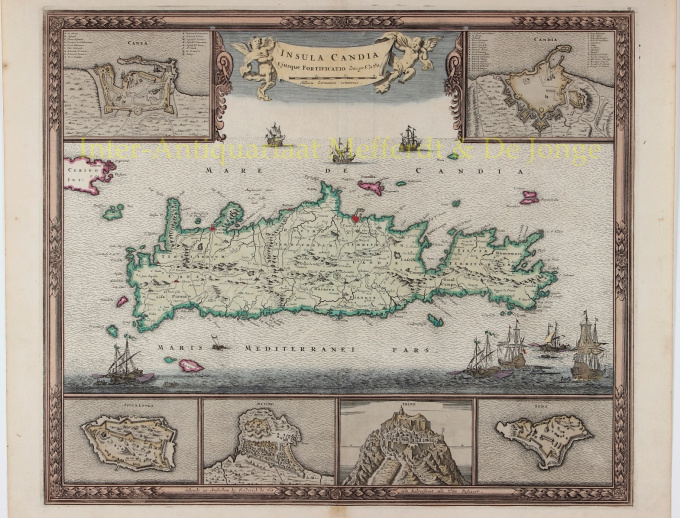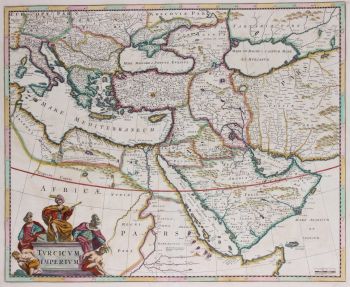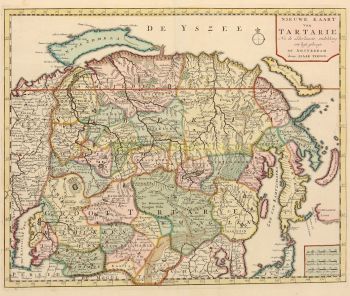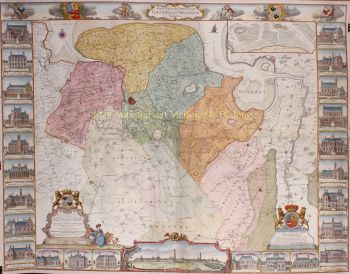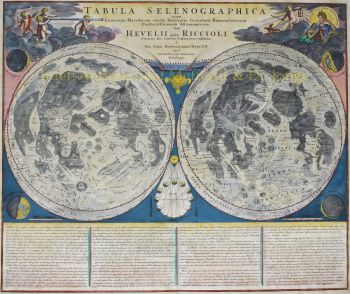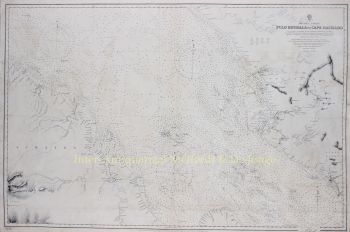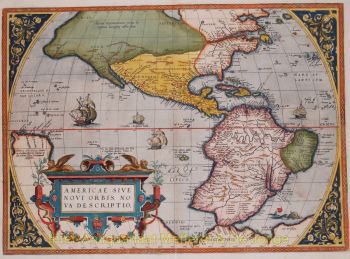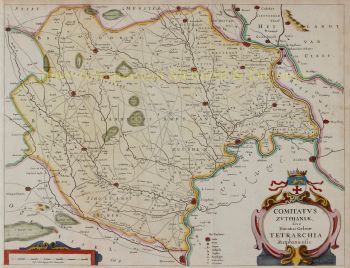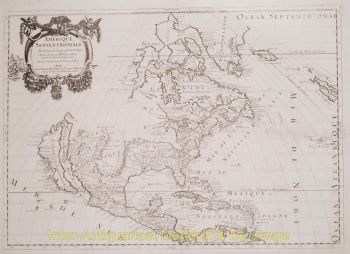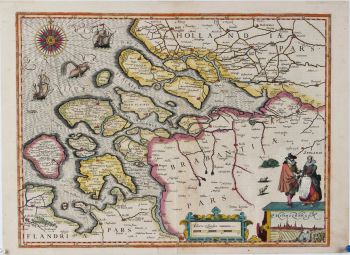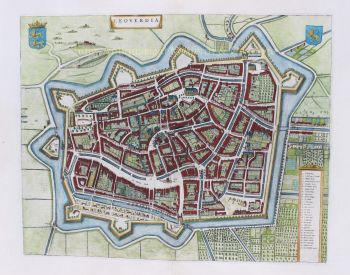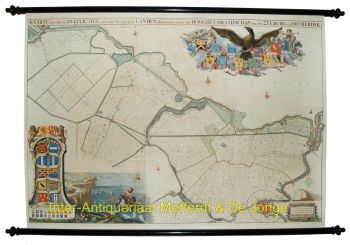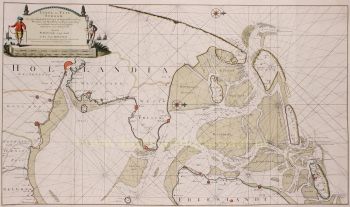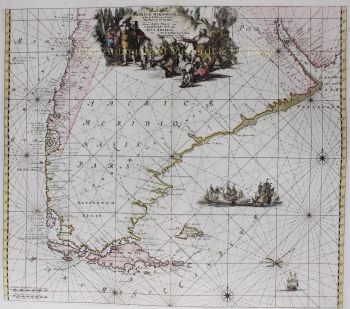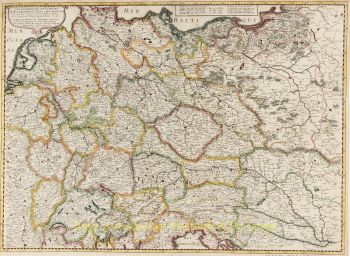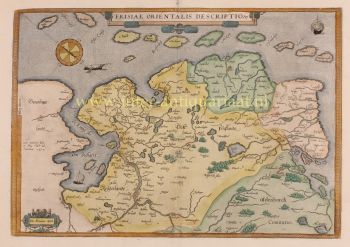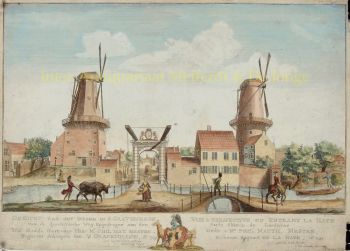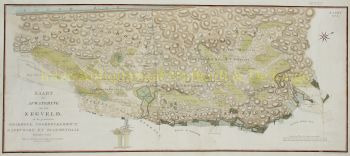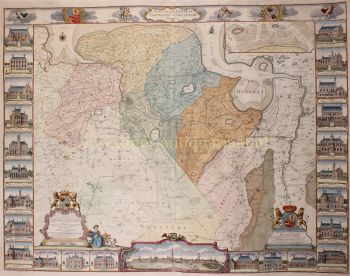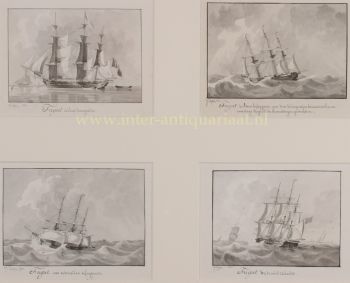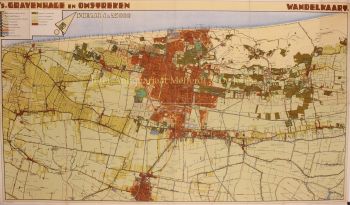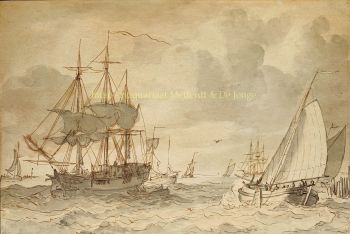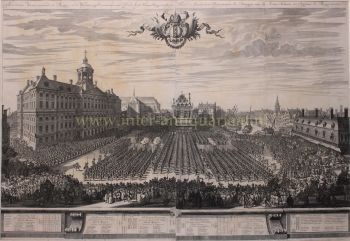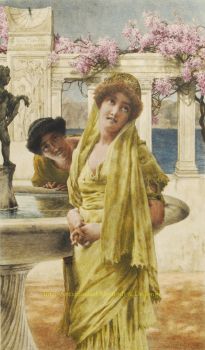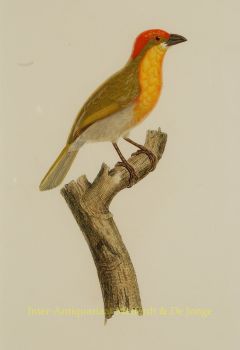Kaart van Kreta 1680
Frederick de Wit
€ 1.450
Inter-Antiquariaat Mefferdt & De Jonge
- Over kunstwerkMAP OF CRETE "Insula Candia Ejusque Fortificatio. "Copper engraving by Frederick de Wit, published in Amsterdam c. 1680, with original hand colouring. Size: 46 x 54,5 cm. One of the most decorative maps of Crete, based on the map by Sébastian de Pontault Beaulieu, a French military engineer who had mapped the fortifications of many Mediterranean islands. His map of Crete was published in 1674, only five years after Crete had fallen to the Ottomans after a 21-year siege (the longest siege in history). The Siege of Candia [modern Heraklion], the capital of Crete, was the central event of the sixth Turkish-Venetian War, better known as Cretan War, or War of Candia. It was a conflict between the Republic of Venice and her allies (the Knights of Malta, the Papal States, French volunteers, and pirates from Mani) against the Ottoman Empire and the Barbary States, fought over the Venetian possession of Crete. The war lasted from 1645 to 1669, and was fought in Dalmatia, Crete, and in numerous naval engagements in the Aegean Sea. On the map the seas around the island are filled with galleons and galleys representing this epic struggle. Above the map the title is on a banner held aloft by putti, and the corners have plans of the towns and fortifications of Chania and Heraklion. Under the map are plans of the fortifications of Spinalonga, Rethymno, Tylissos [Thine] and Suda. Price: Euro1.450,-
- Over kunstenaar
Frederik de Wit is geboren Frederik Hendriksz. Hij werd geboren in een protestantse familie rond 1629 in Gouda, een kleine stad in de provincie Holland, een van de zeven verenigde provincies van Nederland. Zijn vader Hendrik Fredericsz (1608 - 29 juli 1668) was een hechtmaecker (messenmakerij) uit Amsterdam, en zijn moeder Neeltij Joosten (d. voor 1658) was de dochter van een koopman in Gouda. Frederik is op 29 augustus 1661 getrouwd met Maria van der Way (1632-1711), de dochter van een rijke katholieke koopman in Amsterdam. Vanaf ongeveer 1648 tot zijn dood eind juli 1706 woonde en werkte De Wit in Amsterdam. Frederik en Maria kregen zeven kinderen, maar slechts één Franciscus Xaverius (1666-1727) overleefde hen.
In 1648, in het hoogtepunt van de Nederlandse Gouden Eeuw, was De Wit van Gouda naar Amsterdam verhuisd. Al in 1654 had hij een drukkerij en winkel geopend onder de naam "De Drie Krabben", die ook de naam was van zijn huis in de Kalverstraat. In 1655 veranderde De Wit de naam van zijn winkel in "Witte Pascaert". Onder deze naam werden De Wit en zijn firma internationaal bekend.
Bent u geïnteresseerd om dit kunstwerk te kopen?
Artwork details
Related artworks
- 1 - 4 / 4
- 1 - 4 / 24
- 1 - 4 / 12

